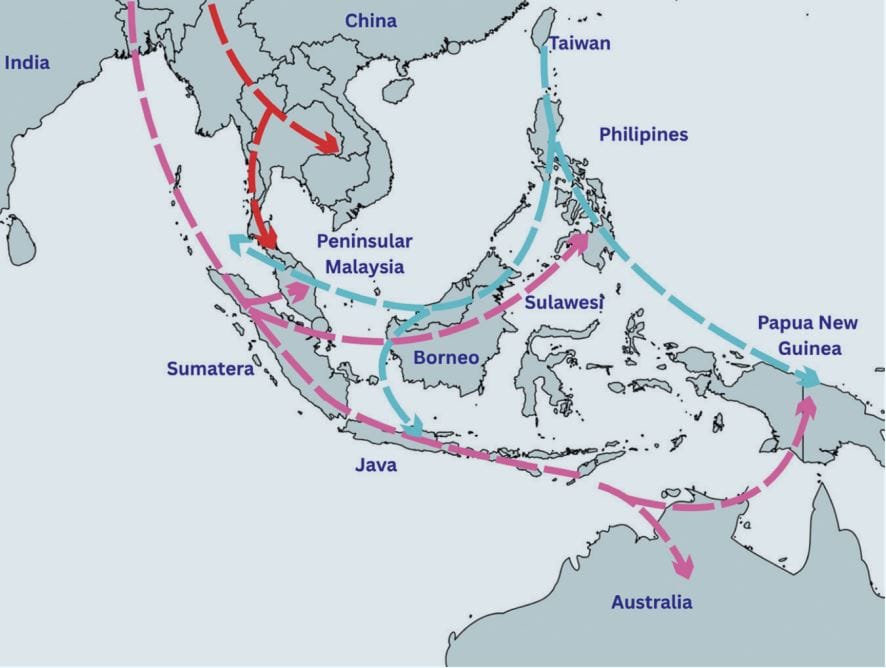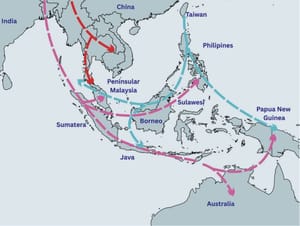POPULATION GENETIC DATASETS collected from various polymorphic genetic regions, either in the nuclear or mitochondrial genome, have contributed towards our understanding of ancient human origins and their migration patterns.
In Peninsular Malaysia, scientists have studied the DNA of different ethnic groups to learn more about their ancestral roots. These studies focus on genes that vary between people—like those related to blood types and immune responses—as well as parts of the genome that do not directly code for traits. By comparing these genetic patterns, researchers have found unique genetic markers in groups that are not closely related today. This suggests that Peninsular Malaysia was settled by multiple waves of people over thousands of years, which matches what archaeologists and linguists have also found (Figure 1).







